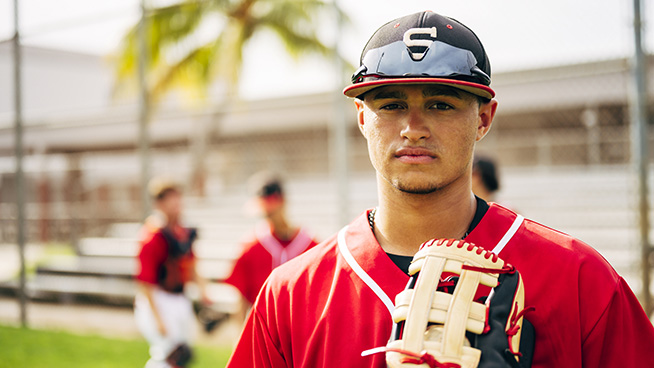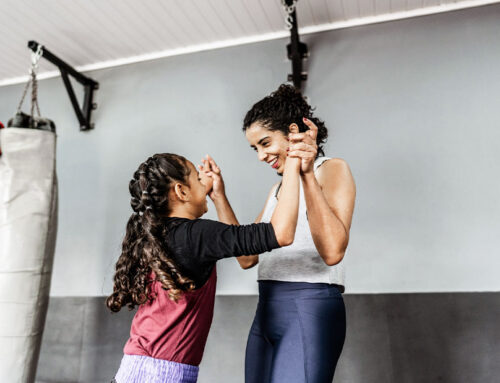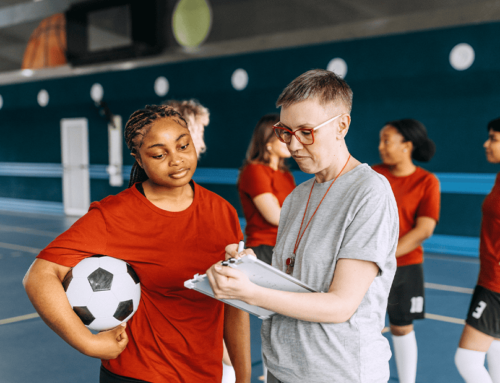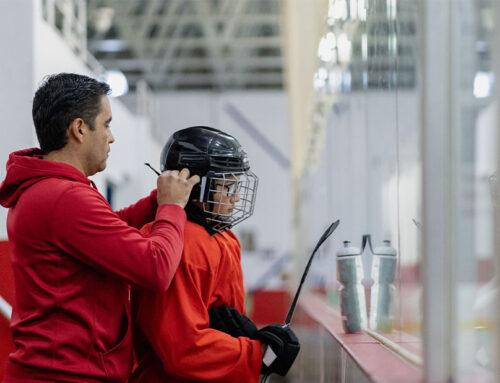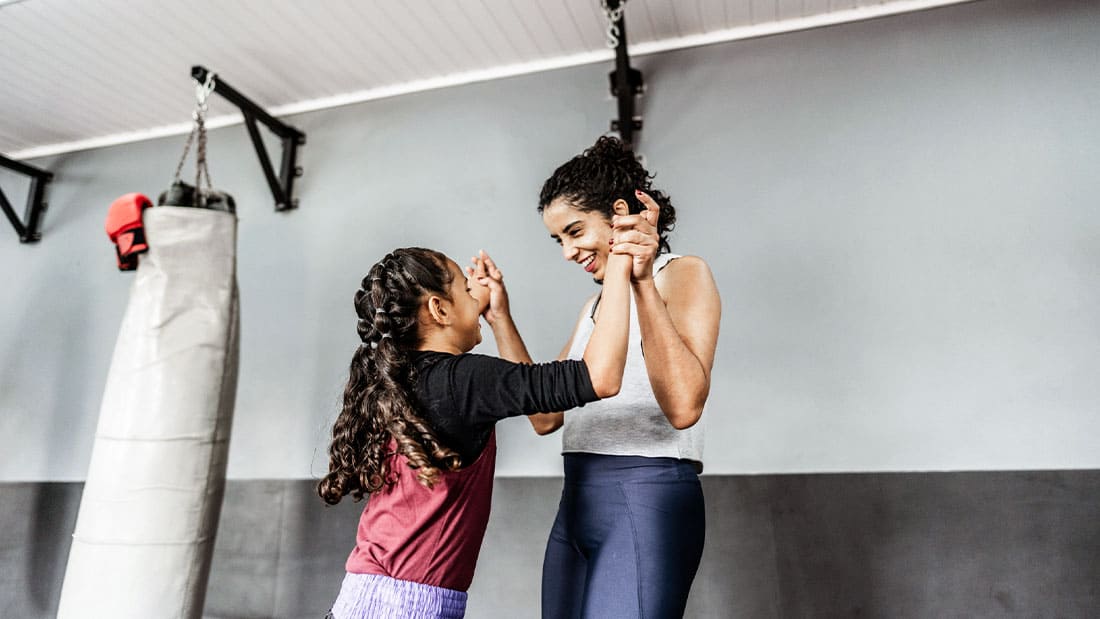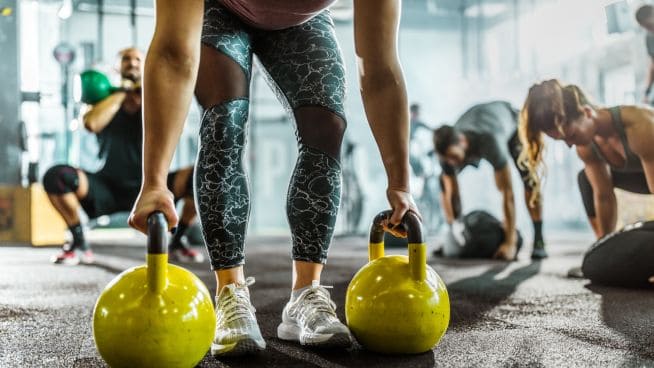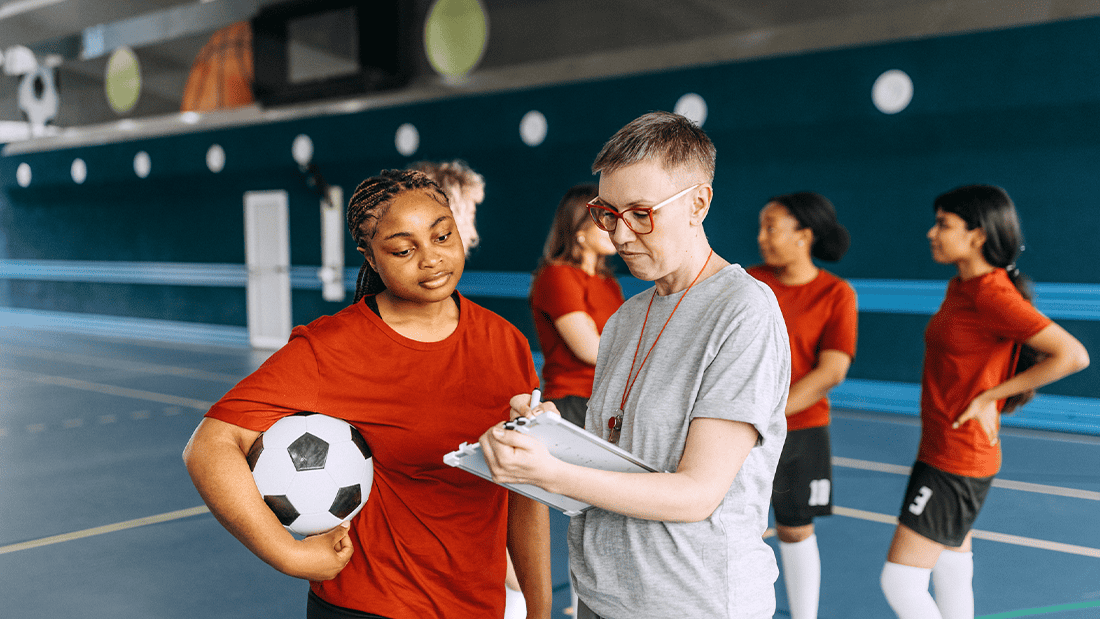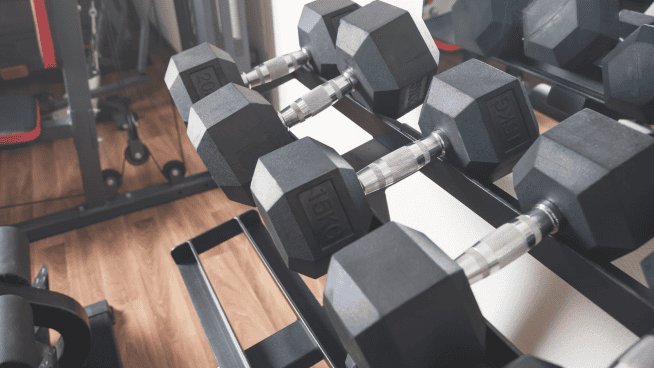The off-season is an essential time for a baseball player. It allows the athlete to address holes in their game, improve their skills, and lays the physical foundation for in-season success. Because of this, it is essential to approach the off-season seriously and systematically. This article will cover off-season training for baseball players addressing strength and conditioning, speed training, and baseball skills training.
Baseball Strength and Conditioning
Off-season strength and conditioning need to establish the physical base for in-season success. This means developing the foundation for the athlete to throw far, hit with power, throw with velocity, run fast, and change directions. All of this starts with the athlete’s legs. Throwing, hitting, sprinting, and changing directions are dependent on having strong and powerful legs. Along with this, the athlete’s upper body will also need to be trained to keep it from being the weak link between the athlete’s legs and the implement (bat, baseball, etc.).
An off-season strength and conditioning program should include three steps:
- Physical foundation
- Strength foundation
- Power foundation
Physical Foundation
Power requires strength. Strength requires larger muscles. This means that this is the part of training where those larger muscles are developed. Also, ligaments and tendons are strengthened during this phase. In other words, this phase lays the foundation for everything else that follows. With this type of training, the volume is moderate (8-15 repetitions per set) with moderate intensity (60-80% of maximum) and incomplete rest between sets (30-90 seconds). Training should be at least three days per week, with each session having a total body focus.
With strength training, I like to organize it so that the first day of the week is the heaviest, the last day is the lightest (but with the greatest volume), and the middle day is in between. So with that in mind, a week in this phase might look like this:
Day One:
- Back squats: 3×8@80%
- Trap bar deadlifts: 3×8@80%
- Close grip bench press: 3×8@80%
- Bent-over rows: 3×8
- Standing kettlebell press: 3×8 each arm
Day Two:
- Front squats: 3×10-12@70%
- Romanian deadlifts: 3×10-12
- Dumbbell floor press: 3×10-12
- Weighted chin-ups: 3×10-12
- 3-in-1 shoulders (giant sets: front raises, side raises, rear delt raises): 3×10 each
Day Three:
- Superset: Split squats and Dips: 3×12-15 each
- Superset: Lunges and Pull-ups: 3×12-15 each
- Superset: Good mornings and Triceps: 3×12-15 each
- Superset: Reverse hyperextensions and Biceps: 3×12-15 each
I understand that some coaches and athletes are hesitant to bench press with pitchers. With that in mind, you’ll see many close-grip bench presses, floor presses, board presses, etc., as this minimizes stress on the athlete’s rotator cuff.
Strength Foundation
Depending on the off-season’s length, an athlete would ideally spend 4-8 weeks in the physical foundation phase. Now it’s time to learn to use those larger muscles. Once again, training is organized around three days per week. The first day is the heaviest, the last day is the lightest, and the middle day is in-between.
Day One:
- Front squats: 3×3-6@85%
- Deadlifts: 3×3-6@85%
- Barbell floor press: 3×3-6@85%
- One-arm dumbbell rows: 3×3-6 each arm
- Seated kettlebell press: 3×3-6 each arm
Day Two:
- Split squats: 3×4-8@80% each leg
- Romanian deadlifts: 3×4-8
- Lying kettlebell bench press: 3×4-8
- Weighted chin-ups: 3×4-8
- 3-in-1 shoulders: 3×10 each exercise
Day Three:
- Back squats: 3×8-10@75%
- Good mornings: 3×8-10
- Weighted dips: 3×8-12
- Pull-ups: 3×8-12
Power Foundation:
After 4-8 weeks of the strength foundation, it’s time to learn to apply that strength quickly. This type of training will continue to develop strength while also enhancing the ability to use it quickly. Again, training will be organized around three sessions per week, with the first being heaviest and the last being the lightest.
Da:
- Complex: Back squats and box jumps: 3×1-4@90% and 10 jumps
- Complex: Trap bar deadlifts and counter-movement jumps: 3×1-4@90% and 10 jumps
- Complex: Reverse grip bench press and medicine ball chest pass: 3×1-4@90% and 10 throws
- Complex: Bent-over barbell rows and medicine ball behind back toss: 3×1-4 and 5 throws
- Push jerk: 3×3-6@60%
Day Two:
- Power clean: 3×3@70%
- Clean pulls: 3×3@70%
- Front squats: 3×4-8@80%
- Good mornings: 3×4-8
Day Three:
- Squat jumps: 3×3-6@30%
- Pause squats: 3×3-6@60%
- Pause close grip bench press: 3×3-6@60%
- Weighted chin-ups: 3×3-6
- 3-in-1 shoulders: 3×10 each exercise
Speed Training
Speed is important for baserunning, and it’s important for getting to the ball during defensive situations. The off-season lays the foundation for speed during the season. Speed training should be done twice a week, preferably on the same day as each of the first two strength training sessions. The first day should be focusing on the athlete’s ability to increase their speed. The second day should focus on how much speed they can run with. Each day includes a hamstring exercise to help with injury prevention and a horizontal plyometric to help the athlete learn to develop force in a horizontal direction. Sample sessions are below:
Day One:
- Bounds: 3×20 yards
- Standing starts: 3×5 yards
- Cross-over step + sprint: 3×30 yards
- Inchworms: 3×20 yards
- Standing long jumps: 10x
Day Two:
- Bounds: 3×40 yards
- Standing starts: 3×20 yards
- Cross-over step + sprint: 3×60 yards
- Crab walks: 3×20 yards
- Mini-hurdle hops: 3×20 yards
Off-Season Baseball Skills Training
The athlete needs to take a full month off from baseball. This time off allows shoulders and elbows to heal, allows the athlete to retain their interest/excitement in the sport (i.e. avoiding burnout), and helps the athlete return to training mentally fresh and focused.
Once that month is over, it’s time to focus on maintaining core skills while bringing up deficiencies. It would take a book to go over everything, but in this article, we’ll focus on a few core skills:
- Hitting
- Pitching
- Catching
- Fielding
Hitting
With the way that pitchers pitch in today’s game, hitting is a skill that has to be worked on year-round. Modern hitting mechanics are designed to swing with power while allowing the bat to be swung quickly. So footwork, head placement, and where the hands are relative to the body need to be a year-round focus. Beyond that, this is the time of year to develop hitting in response to the hitter’s situations. For example, does the hitter need to get better at hitting against curveballs? Low pitches? Etc.
This kind of work is typically done in batting cages. There is usually a progression for cage work. First, practice footwork without the bat. Second, hit off the tee. At this stage, I like to incorporate a lot of drills to work on pitches in different locations and heights and work on keeping the hands in while swinging (so using a mallet, using the knob of the bat, etc.). Third, hit off softly tossed baseballs (generally thrown underhand) to help to put everything together. Finally, hit off pitching. In other words, there is a progression.
What if you don’t have access to batting cages? Then this work still needs to be done in the backyard. A tee is comfortable enough to purchase. To keep from hitting the ball over your fence, purchase sand-filled baseballs (see photo 1 below for an example from www.totalcontrolsports.com). With these types of baseballs, all the cage work mentioned above can still be done in the backyard!
Pitching
Today this is also a year-round skill. With the amount of skill coached to younger and younger hitters, pitching has to match this. The off-season is where new skills and pitchers are learned and where current ones are perfected. Any changes to mechanics should be learned and perfected here.
Ideally, our athletes have taken a month off, which means there is a need to gradually ramp up pitching. There’s also a need to use several types of tools to develop a well-rounded pitcher of any age.
First, throwing the baseball to a partner to help warm up both the arm and the arm motion is important. Generally, this is done with a four-seam fastball grip, but some time does need to be spent doing this with other pitch grips. Start at short distances then gradually back up every few throws.
Second, I like weighted baseballs (6-9 ounces instead of the regular baseball’s five ounces) for the above drill as the pitcher gets used to throwing. The qualifier is that the pitcher’s throwing motion has to be correct while doing this, if the weighted baseballs cause mechanics to break down then they should not be used.
Third, long toss is an important exercise for building strong throws and teaching the pitcher to use their legs while throwing. It’s not unusual to see professional pitchers doing this from one of the foul lines to center field.
Finally, work on the pitching motion. Again, a book could be written on this. But this is where types of pitches, placement, and mechanics are developed, perfected, and improved.
Many of the exercises mentioned here can be done at a park or a backyard. Most of these can also be done in batting cages, though long toss is very difficult there as most cages at between 50 and 70 feet long.
Catching
With hitting and catching being skills that need to be developed year-round, catching is also something that has to be developed constantly. Playing the catcher position has a number of fundamental skills. These include:
- Receiving/framing the ball
- Blocking the ball
- Throwdowns
- Communication with the pitcher
All of these skills need to be developed during the off-season. The nice thing about training catchers is that these can be done almost anywhere. I talked about how to train most of this in an article for the American Baseball Coaches Association.
Fielding
I’m going to talk about both infield and outfield skills here. Infield play is very difficult to simulate without baseballs being hit by the athlete. However, during the off-season, athletes can be working on the techniques of fielding ground balls, using both hands and footwork to come up and make the throw to the appropriate base. Outfield skills can be simulated by catching that pop fly and working on the footwork to throw the ball to the cutoff player.
There is never enough time to focus on all the things we’d like to in training. This is true no matter what level an athlete is at. It’s also true that off-seasons are shorter than they used to be. As athletes move up in level, the season gets longer while the rest gets shorter. This means that it is important to prioritize, focus, and train systematically during the off-season. Remember: the off-season lays the foundation for the season’s success or failure, so don’t ignore it or leave it to chance!
Read More
RECOMMENDED FOR YOU
MOST POPULAR
The off-season is an essential time for a baseball player. It allows the athlete to address holes in their game, improve their skills, and lays the physical foundation for in-season success. Because of this, it is essential to approach the off-season seriously and systematically. This article will cover off-season training for baseball players addressing strength and conditioning, speed training, and baseball skills training.
Baseball Strength and Conditioning
Off-season strength and conditioning need to establish the physical base for in-season success. This means developing the foundation for the athlete to throw far, hit with power, throw with velocity, run fast, and change directions. All of this starts with the athlete’s legs. Throwing, hitting, sprinting, and changing directions are dependent on having strong and powerful legs. Along with this, the athlete’s upper body will also need to be trained to keep it from being the weak link between the athlete’s legs and the implement (bat, baseball, etc.).
An off-season strength and conditioning program should include three steps:
- Physical foundation
- Strength foundation
- Power foundation
Physical Foundation
Power requires strength. Strength requires larger muscles. This means that this is the part of training where those larger muscles are developed. Also, ligaments and tendons are strengthened during this phase. In other words, this phase lays the foundation for everything else that follows. With this type of training, the volume is moderate (8-15 repetitions per set) with moderate intensity (60-80% of maximum) and incomplete rest between sets (30-90 seconds). Training should be at least three days per week, with each session having a total body focus.
With strength training, I like to organize it so that the first day of the week is the heaviest, the last day is the lightest (but with the greatest volume), and the middle day is in between. So with that in mind, a week in this phase might look like this:
Day One:
- Back squats: 3×8@80%
- Trap bar deadlifts: 3×8@80%
- Close grip bench press: 3×8@80%
- Bent-over rows: 3×8
- Standing kettlebell press: 3×8 each arm
Day Two:
- Front squats: 3×10-12@70%
- Romanian deadlifts: 3×10-12
- Dumbbell floor press: 3×10-12
- Weighted chin-ups: 3×10-12
- 3-in-1 shoulders (giant sets: front raises, side raises, rear delt raises): 3×10 each
Day Three:
- Superset: Split squats and Dips: 3×12-15 each
- Superset: Lunges and Pull-ups: 3×12-15 each
- Superset: Good mornings and Triceps: 3×12-15 each
- Superset: Reverse hyperextensions and Biceps: 3×12-15 each
I understand that some coaches and athletes are hesitant to bench press with pitchers. With that in mind, you’ll see many close-grip bench presses, floor presses, board presses, etc., as this minimizes stress on the athlete’s rotator cuff.
Strength Foundation
Depending on the off-season’s length, an athlete would ideally spend 4-8 weeks in the physical foundation phase. Now it’s time to learn to use those larger muscles. Once again, training is organized around three days per week. The first day is the heaviest, the last day is the lightest, and the middle day is in-between.
Day One:
- Front squats: 3×3-6@85%
- Deadlifts: 3×3-6@85%
- Barbell floor press: 3×3-6@85%
- One-arm dumbbell rows: 3×3-6 each arm
- Seated kettlebell press: 3×3-6 each arm
Day Two:
- Split squats: 3×4-8@80% each leg
- Romanian deadlifts: 3×4-8
- Lying kettlebell bench press: 3×4-8
- Weighted chin-ups: 3×4-8
- 3-in-1 shoulders: 3×10 each exercise
Day Three:
- Back squats: 3×8-10@75%
- Good mornings: 3×8-10
- Weighted dips: 3×8-12
- Pull-ups: 3×8-12
Power Foundation:
After 4-8 weeks of the strength foundation, it’s time to learn to apply that strength quickly. This type of training will continue to develop strength while also enhancing the ability to use it quickly. Again, training will be organized around three sessions per week, with the first being heaviest and the last being the lightest.
Da:
- Complex: Back squats and box jumps: 3×1-4@90% and 10 jumps
- Complex: Trap bar deadlifts and counter-movement jumps: 3×1-4@90% and 10 jumps
- Complex: Reverse grip bench press and medicine ball chest pass: 3×1-4@90% and 10 throws
- Complex: Bent-over barbell rows and medicine ball behind back toss: 3×1-4 and 5 throws
- Push jerk: 3×3-6@60%
Day Two:
- Power clean: 3×3@70%
- Clean pulls: 3×3@70%
- Front squats: 3×4-8@80%
- Good mornings: 3×4-8
Day Three:
- Squat jumps: 3×3-6@30%
- Pause squats: 3×3-6@60%
- Pause close grip bench press: 3×3-6@60%
- Weighted chin-ups: 3×3-6
- 3-in-1 shoulders: 3×10 each exercise
Speed Training
Speed is important for baserunning, and it’s important for getting to the ball during defensive situations. The off-season lays the foundation for speed during the season. Speed training should be done twice a week, preferably on the same day as each of the first two strength training sessions. The first day should be focusing on the athlete’s ability to increase their speed. The second day should focus on how much speed they can run with. Each day includes a hamstring exercise to help with injury prevention and a horizontal plyometric to help the athlete learn to develop force in a horizontal direction. Sample sessions are below:
Day One:
- Bounds: 3×20 yards
- Standing starts: 3×5 yards
- Cross-over step + sprint: 3×30 yards
- Inchworms: 3×20 yards
- Standing long jumps: 10x
Day Two:
- Bounds: 3×40 yards
- Standing starts: 3×20 yards
- Cross-over step + sprint: 3×60 yards
- Crab walks: 3×20 yards
- Mini-hurdle hops: 3×20 yards
Off-Season Baseball Skills Training
The athlete needs to take a full month off from baseball. This time off allows shoulders and elbows to heal, allows the athlete to retain their interest/excitement in the sport (i.e. avoiding burnout), and helps the athlete return to training mentally fresh and focused.
Once that month is over, it’s time to focus on maintaining core skills while bringing up deficiencies. It would take a book to go over everything, but in this article, we’ll focus on a few core skills:
- Hitting
- Pitching
- Catching
- Fielding
Hitting
With the way that pitchers pitch in today’s game, hitting is a skill that has to be worked on year-round. Modern hitting mechanics are designed to swing with power while allowing the bat to be swung quickly. So footwork, head placement, and where the hands are relative to the body need to be a year-round focus. Beyond that, this is the time of year to develop hitting in response to the hitter’s situations. For example, does the hitter need to get better at hitting against curveballs? Low pitches? Etc.
This kind of work is typically done in batting cages. There is usually a progression for cage work. First, practice footwork without the bat. Second, hit off the tee. At this stage, I like to incorporate a lot of drills to work on pitches in different locations and heights and work on keeping the hands in while swinging (so using a mallet, using the knob of the bat, etc.). Third, hit off softly tossed baseballs (generally thrown underhand) to help to put everything together. Finally, hit off pitching. In other words, there is a progression.
What if you don’t have access to batting cages? Then this work still needs to be done in the backyard. A tee is comfortable enough to purchase. To keep from hitting the ball over your fence, purchase sand-filled baseballs (see photo 1 below for an example from www.totalcontrolsports.com). With these types of baseballs, all the cage work mentioned above can still be done in the backyard!
Pitching
Today this is also a year-round skill. With the amount of skill coached to younger and younger hitters, pitching has to match this. The off-season is where new skills and pitchers are learned and where current ones are perfected. Any changes to mechanics should be learned and perfected here.
Ideally, our athletes have taken a month off, which means there is a need to gradually ramp up pitching. There’s also a need to use several types of tools to develop a well-rounded pitcher of any age.
First, throwing the baseball to a partner to help warm up both the arm and the arm motion is important. Generally, this is done with a four-seam fastball grip, but some time does need to be spent doing this with other pitch grips. Start at short distances then gradually back up every few throws.
Second, I like weighted baseballs (6-9 ounces instead of the regular baseball’s five ounces) for the above drill as the pitcher gets used to throwing. The qualifier is that the pitcher’s throwing motion has to be correct while doing this, if the weighted baseballs cause mechanics to break down then they should not be used.
Third, long toss is an important exercise for building strong throws and teaching the pitcher to use their legs while throwing. It’s not unusual to see professional pitchers doing this from one of the foul lines to center field.
Finally, work on the pitching motion. Again, a book could be written on this. But this is where types of pitches, placement, and mechanics are developed, perfected, and improved.
Many of the exercises mentioned here can be done at a park or a backyard. Most of these can also be done in batting cages, though long toss is very difficult there as most cages at between 50 and 70 feet long.
Catching
With hitting and catching being skills that need to be developed year-round, catching is also something that has to be developed constantly. Playing the catcher position has a number of fundamental skills. These include:
- Receiving/framing the ball
- Blocking the ball
- Throwdowns
- Communication with the pitcher
All of these skills need to be developed during the off-season. The nice thing about training catchers is that these can be done almost anywhere. I talked about how to train most of this in an article for the American Baseball Coaches Association.
Fielding
I’m going to talk about both infield and outfield skills here. Infield play is very difficult to simulate without baseballs being hit by the athlete. However, during the off-season, athletes can be working on the techniques of fielding ground balls, using both hands and footwork to come up and make the throw to the appropriate base. Outfield skills can be simulated by catching that pop fly and working on the footwork to throw the ball to the cutoff player.
There is never enough time to focus on all the things we’d like to in training. This is true no matter what level an athlete is at. It’s also true that off-seasons are shorter than they used to be. As athletes move up in level, the season gets longer while the rest gets shorter. This means that it is important to prioritize, focus, and train systematically during the off-season. Remember: the off-season lays the foundation for the season’s success or failure, so don’t ignore it or leave it to chance!
Read More

